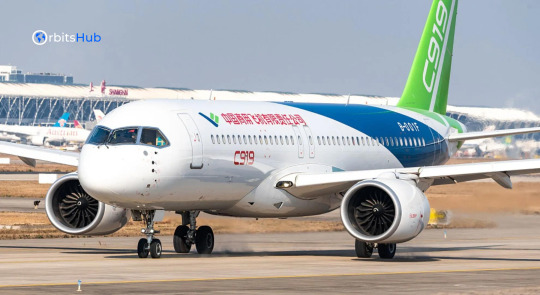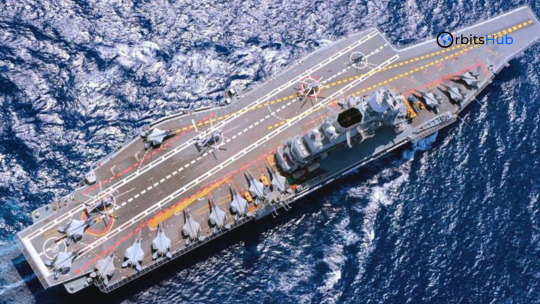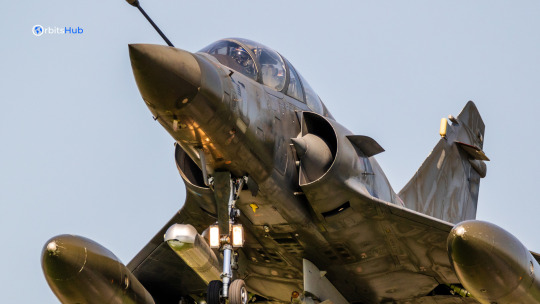Text
Exploring Indian Naval Power: Vikramaditya INS and INS Karanj

India’s maritime capabilities and naval strength are vital components of its national defense strategy. Two significant assets of the Indian Navy, Vikramaditya INS and INS Karanj, showcase the country’s commitment to maritime security, defense preparedness, and technological advancements. In this informative blog, we will delve into the history, features, and contributions of these naval vessels, highlighting their roles in safeguarding India’s maritime interests.
Vikramaditya INS: A Symbol of Naval Power
Vikramaditya INS, formerly known as Admiral Gorshkov, is a formidable aircraft carrier that underwent extensive modernization and refurbishment to join the Indian Navy’s fleet. Originally built by the Soviet Union, the carrier was commissioned in 1987 and served with the Soviet Navy and later the Russian Navy before being acquired by India.
The transformation of Vikramaditya INS into a state-of-the-art aircraft carrier involved significant upgrades and enhancements. The carrier’s flight deck was modified and expanded to accommodate various aircraft, including MiG-29K fighters, Kamov helicopters, and airborne early warning aircraft. Advanced aviation systems, arrestor gear, and catapult systems were installed to support carrier-based operations.
With a displacement of over 45,000 tons and a length of 284 meters, Vikramaditya INS is one of the largest and most powerful warships in the Indian Navy’s inventory. Its strategic capabilities extend beyond conventional warfare to include power projection, humanitarian assistance, disaster relief, and maritime security operations.
Vikramaditya INS plays a crucial role in India’s maritime defense posture, enhancing the country’s reach and presence in the Indian Ocean region. Its ability to deploy and sustain a mix of aircraft for various missions, including air defense, anti-submarine warfare, and reconnaissance, strengthens India’s deterrence capabilities and maritime dominance.

INS Karanj: Advancing Submarine Warfare
In contrast to the aircraft carrier prowess of Vikramaditya INS, INS Karanj represents India’s proficiency in submarine warfare and underwater capabilities. INS Karanj is a diesel-electric submarine of the Kalvari class, a variant of the French Scorpene-class submarines, designed and built in collaboration with Naval Group (formerly DCNS).
Commissioned in 2018, INS Karanj embodies cutting-edge submarine technology, stealth features, and advanced weapon systems. Its design optimizes acoustic signature reduction, making it less detectable by enemy sensors and enhancing its effectiveness in covert operations and anti-submarine warfare scenarios.
The submarine’s propulsion system, equipped with silent-running capabilities, allows for extended underwater endurance and stealthy maneuvering. INS Karanj is armed with torpedoes, anti-ship missiles, and mines, providing a potent offensive and defensive capability against surface vessels and submarines.
INS Karanj operates as part of India’s submarine fleet, which plays a critical role in strategic deterrence, intelligence gathering, maritime surveillance, and safeguarding vital sea lanes of communication. Its deployment enhances India’s maritime domain awareness and operational flexibility in both peacetime and conflict situations.
The submarine’s participation in naval exercises, patrols, and surveillance missions contributes to maritime security, anti-piracy efforts, and protection of India’s maritime interests. INS Karanj’s integration with other naval assets, including surface ships, aircraft, and maritime reconnaissance assets, enhances the Navy’s operational effectiveness and comprehensive maritime defense strategy.
Advancements in Indian Naval Capabilities
The inclusion of Vikramaditya INS and INS Karanj in India’s naval arsenal reflects the country’s commitment to modernizing its maritime forces, enhancing operational readiness, and strengthening national security. These assets, along with other naval platforms, form a cohesive and versatile maritime force capable of addressing a wide range of challenges and contingencies.
India’s naval modernization efforts encompass a spectrum of capabilities, including aircraft carriers, submarines, surface combatants, maritime patrol aircraft, and amphibious warfare vessels. Investments in indigenous shipbuilding, technology development, and international collaborations have propelled India’s naval capabilities to new heights.
The Indian Navy’s focus on blue-water operations, expeditionary capabilities, and strategic partnerships with friendly nations underscores its role as a stabilizing force in the Indian Ocean region and beyond. Vikramaditya INS and INS Karanj represent the culmination of years of planning, investment, and dedication to safeguarding India’s maritime interests and ensuring maritime security in an increasingly complex geopolitical environment.
Conclusion: Safeguarding Maritime Sovereignty
Vikramaditya INS and INS Karanj symbolize India’s maritime prowess, technological advancements, and strategic foresight in naval operations. As integral components of the Indian Navy’s fleet, these assets contribute to maritime security, defense preparedness, and regional stability.
The capabilities exhibited by Vikramaditya INS as an aircraft carrier and INS Karanj as a submarine demonstrate India’s multi-dimensional approach to maritime defense, encompassing power projection, deterrence, surveillance, and response capabilities. The synergy between these platforms, coupled with ongoing modernization initiatives, positions India as a key maritime player in the global arena.
As India continues to invest in naval capabilities, research and development, and international cooperation, its ability to safeguard maritime sovereignty, protect vital sea lanes, and respond effectively to emerging threats will be further strengthened. Vikramaditya INS and INS Karanj serve as tangible manifestations of India’s commitment to securing its maritime interests and contributing to a secure and stable maritime domain.
0 notes
Text
The Mirage 2000 and C919 Aircraft: A Comparative Analysis

In the dynamic world of aviation, two prominent aircraft have garnered attention for their unique features, capabilities, and contributions to the industry. The Mirage 2000, a renowned fighter jet with a rich legacy, stands in contrast to the C919 aircraft, China's ambitious venture into commercial aviation. In this comprehensive blog, we delve into the intricacies of both aircraft, exploring their design, performance, technological advancements, and impact on the aviation landscape.
Mirage 2000: A Legacy of Excellence
The Mirage 2000 , developed by Dassault Aviation, holds a distinguished place in the history of military aviation. Its origins trace back to the late 1970s when it first took to the skies, showcasing remarkable agility, speed, and combat capabilities. Over the years, the Mirage 2000 has undergone several upgrades, evolving into a versatile platform capable of fulfilling various roles, including air superiority, ground attack, reconnaissance, and nuclear deterrence.
One of the standout features of the Mirage 2000 is its aerodynamic design, characterized by its delta wing configuration and slender fuselage. Powered by a single SNECMA M53-P2 turbofan engine, the Mirage 2000 boasts impressive performance metrics, with speeds exceeding Mach 2 and a combat range of over 1,500 kilometers. Its advanced avionics, including radar systems, sensors, and weapons integration, contribute to its effectiveness in modern aerial warfare scenarios.
The Mirage 2000 has seen action in numerous conflicts, showcasing its combat prowess and reliability in challenging environments. From operations during the Gulf War to peacekeeping missions and air patrols, this iconic fighter jet has demonstrated its ability to adapt and perform under diverse conditions. Its successful track record has earned it the trust of air forces around the world, including those of France, India, Greece, and Egypt.
C919 Aircraft: China's Entrant into Commercial Aviation
In contrast to the Mirage 2000's military focus, the C919 aircraft represents China's ambitious leap into the commercial aviation market. Manufactured by Commercial Aircraft Corporation of China (COMAC), the C919 is a narrow-body passenger jet designed to compete with established models like the Airbus A320 and Boeing 737. It embodies China's aspirations to become a major player in global aviation manufacturing and operations.
The C919 incorporates modern technologies and materials to enhance fuel efficiency, passenger comfort, and operational reliability. Its utilization of composite materials in construction, along with advanced avionics and efficient engines like the LEAP-1C from CFM International, positions it as a competitive option for airlines seeking cost-effective and environmentally friendly solutions.
Despite facing challenges such as development delays and certification processes, the C919 achieved a significant milestone with its maiden flight in 2017. This successful debut marked China's capability to produce world-class commercial aircraft, signaling its intent to capture a share of the rapidly growing aviation market, particularly in Asia and beyond.

Comparative Analysis: Mirage 2000 vs. C919 Aircraft
When comparing the Mirage 2000 and C919 aircraft, several key differences and similarities emerge. While the Mirage 2000 is a combat-proven fighter jet renowned for its agility, performance, and versatility in military operations, the C919 represents China's technological prowess and ambitions in commercial aviation.
In terms of design, the Mirage 2000's sleek and aerodynamic profile differs significantly from the C919's narrow-body configuration optimized for passenger transport. The Mirage 2000's focus on speed and maneuverability contrasts with the C919's emphasis on fuel efficiency, range, and passenger amenities.
Technologically, both aircraft showcase advancements relevant to their respective domains. The Mirage 2000 integrates advanced avionics, weapons systems, and radar capabilities tailored for combat scenarios, whereas the C919 incorporates modern materials, efficient engines, and cabin comforts suited for commercial airline operations.
Performance-wise, the Mirage 2000 excels in agility, reaching supersonic speeds and executing precise maneuvers essential for aerial combat engagements. On the other hand, the C919 prioritizes range, fuel economy, and passenger capacity, catering to the demands of commercial air travel with its modern systems and operational capabilities.
In terms of impact, the Mirage 2000 has left a lasting legacy in military aviation, serving multiple air forces and participating in various conflicts worldwide. Its reliability, adaptability, and combat effectiveness have earned it a reputation as a formidable fighter jet. Conversely, the C919's impact is still unfolding as it enters commercial service, aiming to compete with established aircraft models and contribute to China's growing influence in global aviation.
Conclusion: Shaping the Future of Aviation
The Mirage 2000 and C919 aircraft represent distinct yet significant facets of the aviation industry. While the Mirage 2000 embodies the pinnacle of military aviation technology and performance, the C919 symbolizes China's emergence as a major player in commercial aircraft manufacturing and operations.
As these aircraft continue to evolve, innovate, and shape the future of aviation, their contributions to global air travel, defense capabilities, and technological advancements will be closely monitored. Whether in combat scenarios or commercial airline operations, the Mirage 2000 and C919 stand as testaments to human ingenuity, engineering excellence, and the relentless pursuit of flight.
0 notes
Text
"Exploring the Skies: Mirage 2000, INS Vikramaditya, INS Karanj, and the C919 Aircraft"

In the dynamic world of aviation and maritime defense, several notable names have made significant contributions and advancements. This blog will delve into the fascinating realms of the Mirage 2000 fighter jet, INS Vikramaditya aircraft carrier, INS Karanj submarine, and the C919 aircraft, providing insights into their capabilities and contributions to the aerospace and maritime sectors.
1. Mirage 2000: A Versatile Fighter Jet
The Mirage 2000 is a versatile multirole fighter jet known for its agility, performance, and advanced avionics. Originally developed by Dassault Aviation in France, the Mirage 2000 has been widely used by air forces around the world, showcasing its capabilities in air defense, ground attack, reconnaissance, and electronic warfare missions.
2. INS Vikramaditya: India’s Mighty Aircraft Carrier
INS Vikramaditya is a formidable aircraft carrier commissioned by the Indian Navy, formerly known as the Admiral Gorshkov of the Russian Navy. With its extensive flight deck, modern aviation facilities, and advanced weaponry systems, INS Vikramaditya serves as a crucial asset for India’s maritime defense capabilities and power projection in the Indian Ocean region.
3. INS Karanj: India’s Stealth Submarine

4. C919 Aircraft: China’s Indigenous Commercial Jet
The C919 aircraft is a symbol of China’s ambitions in the commercial aviation sector, developed by the Commercial Aircraft Corporation of China (COMAC). As China’s first domestically designed and manufactured commercial jetliner, the C919 aims to compete with established aircraft manufacturers and capture a share of the global commercial aviation market with its modern design, fuel efficiency, and advanced technology.
Exploring Advancements in Aerospace and Maritime Defense
From fighter jets and aircraft carriers to submarines and commercial aircraft, the advancements in aerospace and maritime defense technologies continue to shape global security and transportation landscapes. These innovative platforms highlight the ongoing efforts of nations and industries to enhance capabilities, ensure security, and drive progress in the fields of aviation and maritime operations.
Stay tuned for detailed insights into each of these remarkable platforms, their features, capabilities, and contributions to the ever-evolving world of aerospace and maritime defense. Explore the skies and seas with us as we uncover the fascinating stories behind Mirage 2000, INS Vikramaditya, INS Karanj, and the C919 aircraft.
0 notes
Text
"Exploring the Mirage 2000, INS Vikramaditya, INS Karanj, and C919 Aircraft: A Comprehensive Overview"

In the realm of aerospace and defense, several notable aircraft and naval vessels have made significant impacts on technological advancements and strategic capabilities. This blog will delve into the Mirage 2000, INS Vikramaditya, INS Karanj, and C919 aircraft, providing readers with a comprehensive overview of these impressive machines.
1. Mirage 2000: The Legacy of a Versatile Fighter Jet
The Mirage 2000, developed by Dassault Aviation, is a renowned multirole fighter jet known for its agility, versatility, and advanced avionics. From air defense missions to ground attacks, the Mirage 2000 has served numerous air forces around the world with distinction.
2. INS Vikramaditya: India's Mighty Aircraft Carrier
INS Vikramaditya, formerly known as the Admiral Gorshkov, is India's formidable aircraft carrier, featuring a robust air wing capability and advanced naval technologies. With its strategic importance in naval operations, INS Vikramaditya symbolizes India's maritime power projection capabilities.
3. INS Karanj: India's Silent Submarine Warrior
INS Karanj, a Scorpène-class submarine of the Indian Navy, represents cutting-edge submarine technology and stealth capabilities. As part of India's submarine fleet modernization efforts, INS Karanj plays a vital role in maritime defense and deterrence.
4. C919 Aircraft: China's Ambitious Commercial Jetliner
The C919, developed by Commercial Aircraft Corporation of China (COMAC), is China's ambitious endeavor in the commercial aviation industry. As a narrow-body jetliner, the C919 aims to compete with established aircraft manufacturers globally, signaling China's aspirations in the aerospace sector.
In-Depth Analysis and Insights
Technological Advancements: Explore the advanced features and technological innovations incorporated in the Mirage 2000, INS Vikramaditya, INS Karanj, and C919 aircraft.
Operational Capabilities: Discuss the operational roles, missions, and capabilities of these aircraft and vessels in military and civilian contexts.
Strategic Significance: Analyze the strategic importance of these platforms in national defense, regional security dynamics, and global aerospace advancements.
Future Prospects: Consider the future developments, upgrades, and potential impact of these platforms on the aerospace and maritime industries.
Conclusion: A Glimpse into Aviation and Naval Excellence
In conclusion, the Mirage 2000, INS Vikramaditya, INS Karanj, and C919 aircraft represent remarkable achievements in aviation and naval engineering. From combat capabilities to civilian aviation advancements, these platforms showcase the continuous pursuit of excellence and innovation in aerospace and defense industries globally.
1 note
·
View note